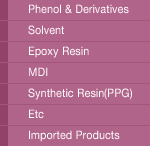VENTILATION :
Good ventilation is essential
in areas where acetone is handled
to prevent the accumulation of
explos ive mixtures. Explosion-proof
fans should be used in mechanical
type ventilation system. Under
normal conditions the atm ospheric
concentration of acetone vapor
must be kept low enough to prevent
irritation of the mucous membranes
and discom fort to the workers.
Under abnormal conditions,
such as leaks or spills, special
emergency ventilating equipment
may be necessary.
NORMAL HANDLING :
Danger! Extremely flammable.
Keep away from heat, sparks
and flame.
Electrically ground all ha
ndling equipment.
Keep container closed.
Do not use air pressure to
unload acetone from container.
Use adequate. Keep co ntainer
closed.
Do not use air pressure to
unload acetone from container.
Use adequate ventilation.(cf.
Section E - Resp iratory Protection).
Observe OSHA regulations on
exposure limits.
Avoid prolonged or frequently
repeated breathing of vapors.
Avoid prolonge d or frequent
contact with skin.
Wear safely glasses with cup-type
shilds or goggles, face shield,
natural rubber or neo prene
gloves, hard hat and safety
shoes in normal handling operations.
Whenever handling operations
are such that gross contact
with the liquid is unavoidable,
the handler should wear full
protective equipment and clothing
comprising chemic al goggles,
face shield, hard hat, and natural
rubber or neoprene jacket, trousers,
gloves and shoes or boots.
STORAGE :
Protect container against physical
damage. Store in accordance
with OSHA Regulation 29 CFR
1910.106 in a cool, well-ventilated
location equipped with automatic
sprinklers or fire extinguishing
system.
Keep away from source s of
ignition and oxidizing materials.
"Empty" containers
unless thoroughly cleaned, must
be assumed to have t he same
hazards as full ones.
PRECAUTIONARY LABEL :
□ ATTACHED NOT ATTACHED
D.O.T Classification : Flammable
liquid
Allied corporation Product
Label.
Danger! Extremely flammable
D.O.T. Label : Flammable liquid
Empty container warning label.
SPILL OR LEAK :
Eliminate all sources of ignition
in the vicinity of spill or
released vapors. Isolate the
spill area. Permit only trained
personnel wearing full personal
protective clothing and equipment
to enter the spill area. Te
rminate the leak immediately,
if possible. Collect the spill
in a waste container for disposal.
Then flush the spill are a thoroughly
with water; wash contaminated
equipment thoroughly with water.
Flushing and wash water must
be contained an d prevented
from entering a waterway. Spills
of acetone should be reported
to appropriate Local Environmental
Agencies. Adequately ventilate
the area.
FIRE EXTINGUISHING AGENTS
RECOMMENDED :
Small Fire : Use carbon dioxide
or dry chemical
Large Fire : Use "alcohol"
type form ; water spray will
reduce intensity of flames.
Acetone
- water solutions containing
more than 2.5wt.% acetone are
flammable mixtures.
SPECIAL FIRE FIGHTING PRECAUTIONS
:
Handles as very flammable liquid.
Use water spray to keep fire-exposed
conta iners cool. Do not enter
the fire area without proper
personal protective equipment
including self-contained breathing
a pparatus.
FIRE EXTINGUISHING AGENTS
TO AVOID :
No standard agent.
SPECIAL PRECAUTIONS/PROCEDURES
:
Care should be exercised when
transporting material to prevent
leak. Keep drums containing
acetone tightly closed and away
from heat, sparks and open flames.
Vent drum or shipping tank before
unloadi ng the acetone from
containers.
Wear protective clothing (see
"NORMAL HANDLING"
above) when unloading. |


